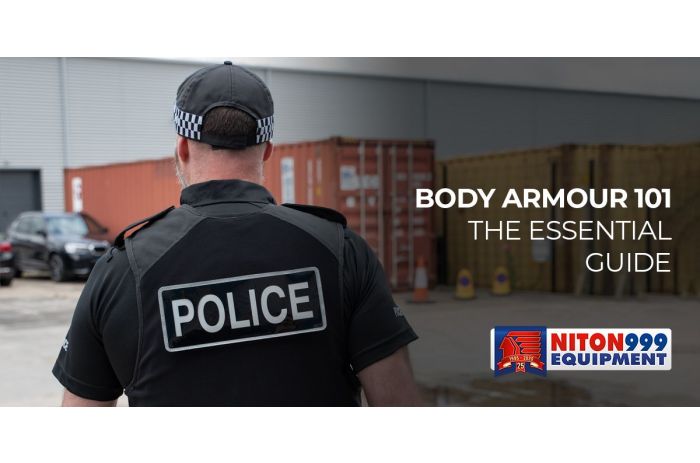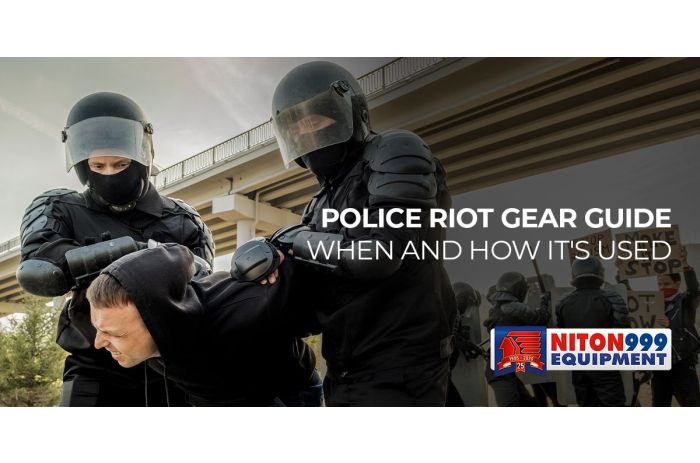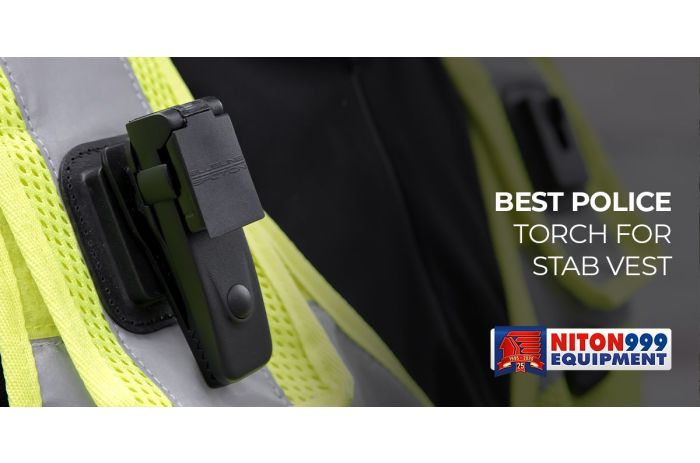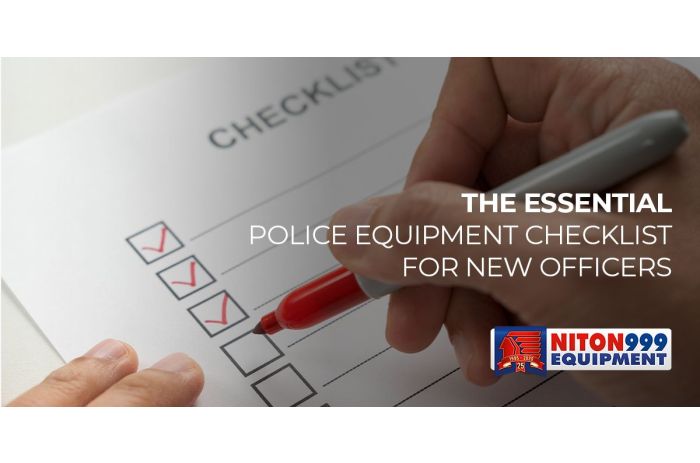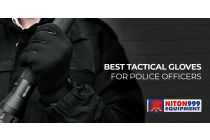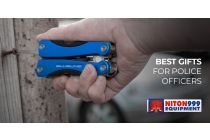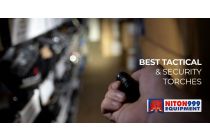Body armour is vital for law enforcement and security, but it comes in many forms designed for different applications, from covert stab-proof vests to full-blown ballistic armour.
It’s vital to note that vest recommendations and requirements vary throughout the UK, but virtually all police, security personnel and emergency services wear stab vests at minimum.
Specialist armed and firearms units, or those operating in particularly volatile or high-risk areas, may be required to wear higher-rated vests that offer both comprehensive knife, spike and ballistic protection.
This is a guide to body armour in the UK.
Choosing the Right Body Armour
In the UK, body armour levels are typically certified via the Home Office Scientific Development Branch (HOSDB) standard for stab and knife threats.
There are two core types of body armour:
- Soft Armour: Typically made of multiple layers of woven or laminated fibres (like Kevlar), soft body armour is primarily designed to protect against knife attacks or bullets from handguns. It's flexible, relatively lightweight, and can be comfortably worn under clothing for covert situations or daily wear.
- Hard Armour: Hard body armour is comprehensive, incorporating rigid plates, typically made of materials like steel or ceramic. Ballistically-rated plates can stop more powerful rounds such as rifle or automatic weapon fire. Hard ballistic armour is generally heavier and more restrictive than soft armour and is used for military purposes and specialist and armed law enforcement units. With that said, not all hard armour is ballistically rated.
Most forms of body armour are considered soft armour, but some vests feature removable pouches for hard plates. Hard armour provides solid plates that provide additional protection against blunt trauma.

The above Damascus Imperial Elite Armour is designed for stab, slash, spike and blunt trauma protection.
UK Ballistic Body Armour Ratings
In the UK, body armour levels and standards are set by the Home Office Scientific Development Branch (HOSDB), now known as the Centre for Applied Science and Technology (CAST).
The ballistic resistance standards include the following, listed from lower to higher protection.
The "HG" stands for handgun, indicating protection against handgun ammunition, while "RF" stands for rifle fire, denoting protection against rifle rounds.
- HG1/A: Protects against 9mm FMJ RN and .357 Magnum JSP. This is roughly equivalent to the US NIJ standard Level II-A.
- HG1: Protects against 9mm FMJ RN and .357 Magnum JSP.
- HG2: Protects against 9mm FMJ RN and .357 Magnum JSP, with more extensive coverage and superior performance compared to HG1. This is approximately equivalent to the US NIJ standard Level II.
- HG3: Protects against 7.62mm x 51mm FMJ Boat-tail, equivalent to the US NIJ standard Level III.
- RF1: Protects against 7.62mm x 51mm FMJ Boat-tail and is more protective against rifle fire than HG3.

The above Ministry of Justice-approved vest is certified with KR2/SP2 stab and spike resistance certified to the HOSDB Body Armour Standard 2007.
A Guide to Stab-Resistant Options
For those at risk from attacks with edged weapons such as knives, broken glass or sharp instruments, stab-resistant body armour is essential.
Multi-protective body armour for both bladed, spiked and ballistic threats is standard in the UK police force, whereas high-protection ballistic armour is only worn by select specialist units.
In the UK, the Home Office Scientific Development Branch (HOSDB) provides classification standards for stab-resistant vests based on the energy levels they can withstand: lower energy (E1) and higher energy (E2).
These HOSDB standards further categorise stab-resistant body armour into three levels: KR1, KR2, and KR3. There are corresponding ratings for spike protection (e.g. non-bladed sharp weaponry like a screwdriver) through SP1 to SP3.
- KR1 offers the lowest level of protection, capable of withstanding attacks with the energy equivalent of 24 joules. This is suitable for those facing risks in relatively controlled environments where knife threats, if present, are likely to be opportunistic rather than planned.
- KR2 vests offer a higher level of protection, designed to resist attacks with energy levels of up to 36 joules. This level of protection might be suitable for those who work in environments with a higher risk of knife attacks, such as certain areas of law enforcement, private security, or social work.
- KR3 level offers the highest protection against stab threats, capable of withstanding 48 joules of energy. This is typically utilised by those who regularly face severe knife threats, often in volatile environments.
Choosing the Right Size of Body Armour
Getting the right size for your body armour ensures its effectiveness. Ill-fitting armour may not provide adequate protection and can be cumbersome, restricting movement.
Generally, body armour should cover your vital organs, including your heart, lungs, and a portion of your lower torso. It should not be too long that it hinders your movement, particularly when you sit down.
To find the right size, you'll need to measure:
- Chest: Measure at the fullest part, keeping the tape level under your armpits and around your shoulder blades.
- Waist: Measure around your natural waistline, typically just above your belly button.
- Front Length: Measure from the collarbone to the waistline.
- Back Length: Measure from the base of the neck to the waistline.
You can consult the manufacturer's size guide with these measurements to find the right fit.
Tips When Buying Body Armour
Understand Your Needs
The first step in choosing the appropriate body armour is assessing the nature of your job or the potential threats you might face.
In the UK, most vests are considered ‘multi-threat vests,’ meaning they protect against both knives and firearms, though the extent of their effectiveness depends on their ratings.
Consider Overtness
Body armour comes in two main categories: overt and covert. Overt body armour is designed to be worn over clothing and is typically used by law enforcement and military personnel.
It is usually more robust, offers higher protection levels, and often includes additional features like pouches for carrying equipment.
On the other hand, covert body armour is designed for discretion and is worn under clothing. It is most suitable for personal protection or situations requiring a low profile.
The choice between overt and covert body armour depends largely on the nature of your role and the necessary level of discretion.
Comfort and Mobility
When choosing body armour, ensure that it doesn't restrict your movement and is comfortable to wear for extended periods.
Factors such as the weight of the armour, its flexibility, and its ability to manage heat and moisture significantly impact comfort and mobility.
Remember, wearing body armour should not compromise your ability to perform your duties effectively.
Quality and Standards
It's vital to buy body armour from a reliable and trustworthy manufacturer. Look for body armour that meets or exceeds industry standards, such as EN1063 for the EU or NIJ standards for the US.
Stab, spike and knife attacks are measured via the Home Office Scientific Development Branch (HOSDB).
Maintenance
Like any safety equipment, body armour requires regular maintenance to ensure its effectiveness.
Body armour materials can degrade over time. Replacing your body armour is essential once it shows signs of serious wear and tear.
Summary: Body Armour 101: Understanding the Different Levels and Their Uses
Body armour in the UK varies but is certified via the Home Office Scientific Development Branch (HOSDB) standards.
All security, law enforcement and emergency services personnel wear body armour. Most body armour is considered ‘multi-threat’ body armour, meaning it protects against a wide range of threats.
Specialist officers in firearms or armed units will often wear body armour with a higher ballistic rating for firearms protection.
FAQs
1. What type of body armour do UK police use?
UK police officers typically utilise body armour that protects against ballistic (firearms), edged blade and spike threats. The specific level of protection may differ depending on the region, force, and nature of the officer's duties.
Specialist units might use armour-graded HG2 or HG3, offering protection against rifle rounds. They might wear KR1 or KR2 for day-to-day patrol duties, protecting against knife attacks.
2. What body armour do most UK police wear?
Most UK police officers wear KR1 or KR2 body armour during their regular duties, as these protect against most common threats. However, police body armour varies by the police force, unit and area.
3. Is body armour legal in the UK?
Body armour is legal to purchase, own, and wear in the UK. However, the law forbids using body armour to assist in criminal activity.
4. Do UK police wear bulletproof vests?
Yes, UK police officers typically wear bulletproof vests as part of their standard uniform. These vests are designed to protect against both knife and firearm threats.
5. Is it illegal to wear a stab vest in the UK?
No, it is not illegal to wear a stab vest in the UK. Security personnel, door staff and civilians can legally wear stab vests for personal protection.
6. Can a knife penetrate a bulletproof vest?
Standard bulletproof vests, primarily designed to stop bullets, may not effectively prevent a knife attack.
Knives can potentially penetrate the fabric layers of a bulletproof vest, particularly if the force is focused on a small area (like a stab). However, many modern vests, especially those used by law enforcement, are designed as 'dual-threat' vests, protecting against both bullets and edged weapons.
7. Are police vests in the UK stab resistant?
The body armour worn by UK police officers typically offers protection against stab or slash threats.
These vests are often referred to as "stab vests" or "bulletproof vests," but they are more accurately described as multi-threat vests designed to protect against various types of threats.
8. How heavy is UK police body armour?
The weight of body armour can vary considerably depending on its level of protection and the materials used. Generally, police body armour can weigh anywhere between 2 to 5 kg (approximately 4.4 to 11 lbs).
However, higher protection levels or additional features (like added trauma plates or equipment pouches) can increase the weight. Despite the weight, these vests are designed to distribute the load evenly, allowing for reasonable comfort and mobility during wear.

